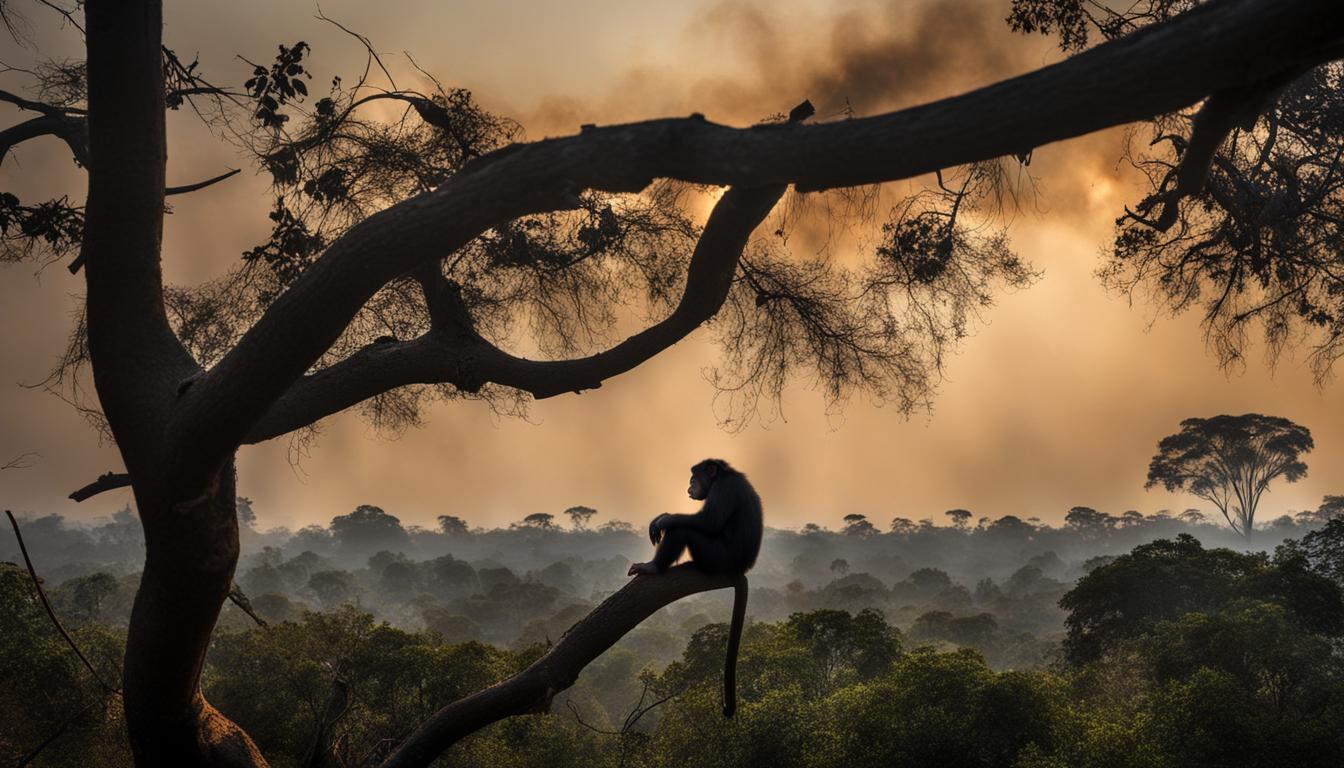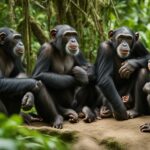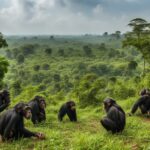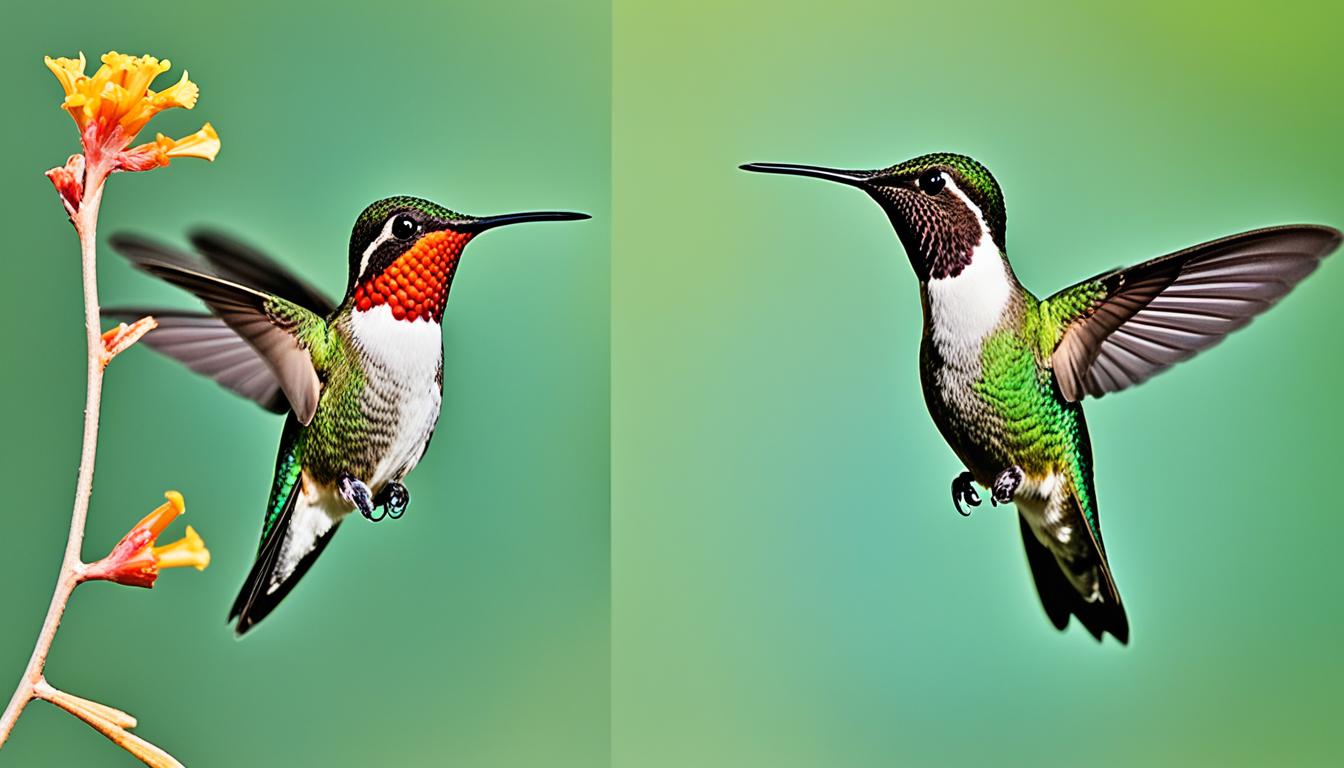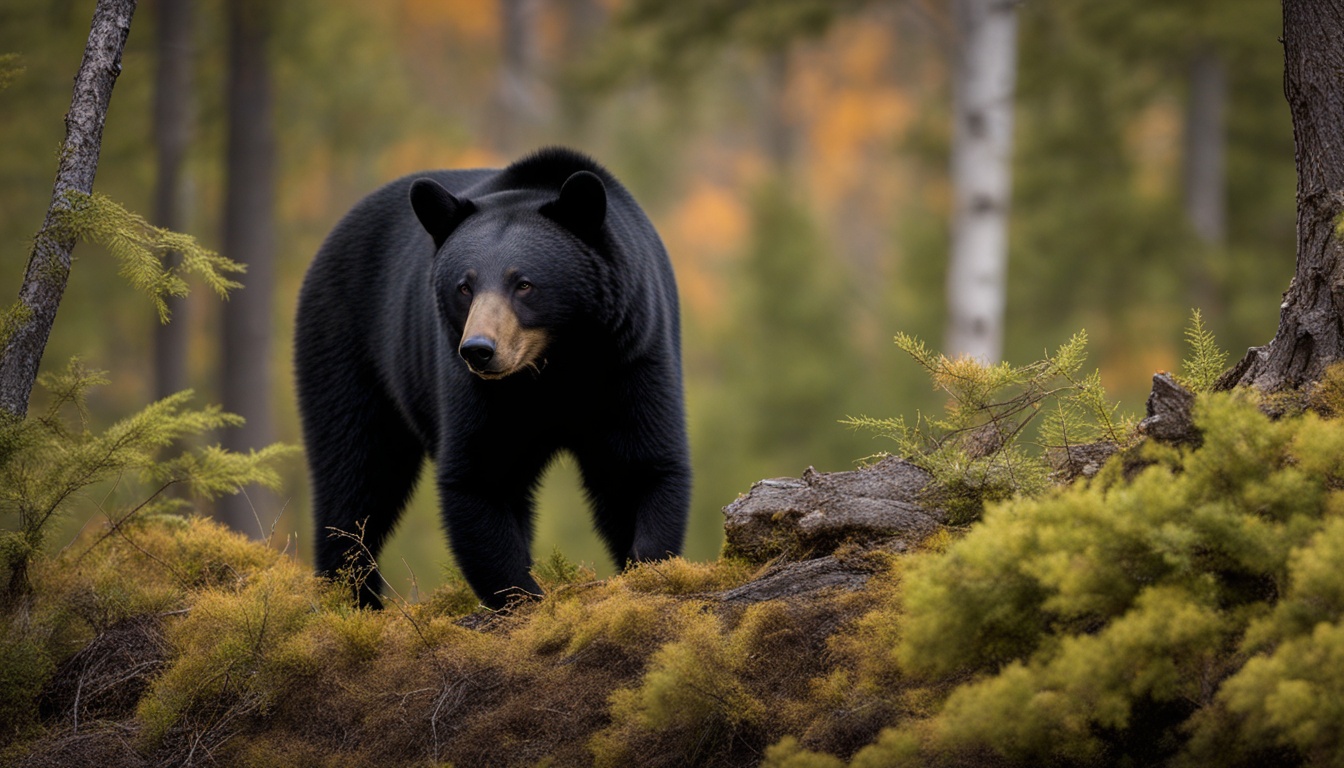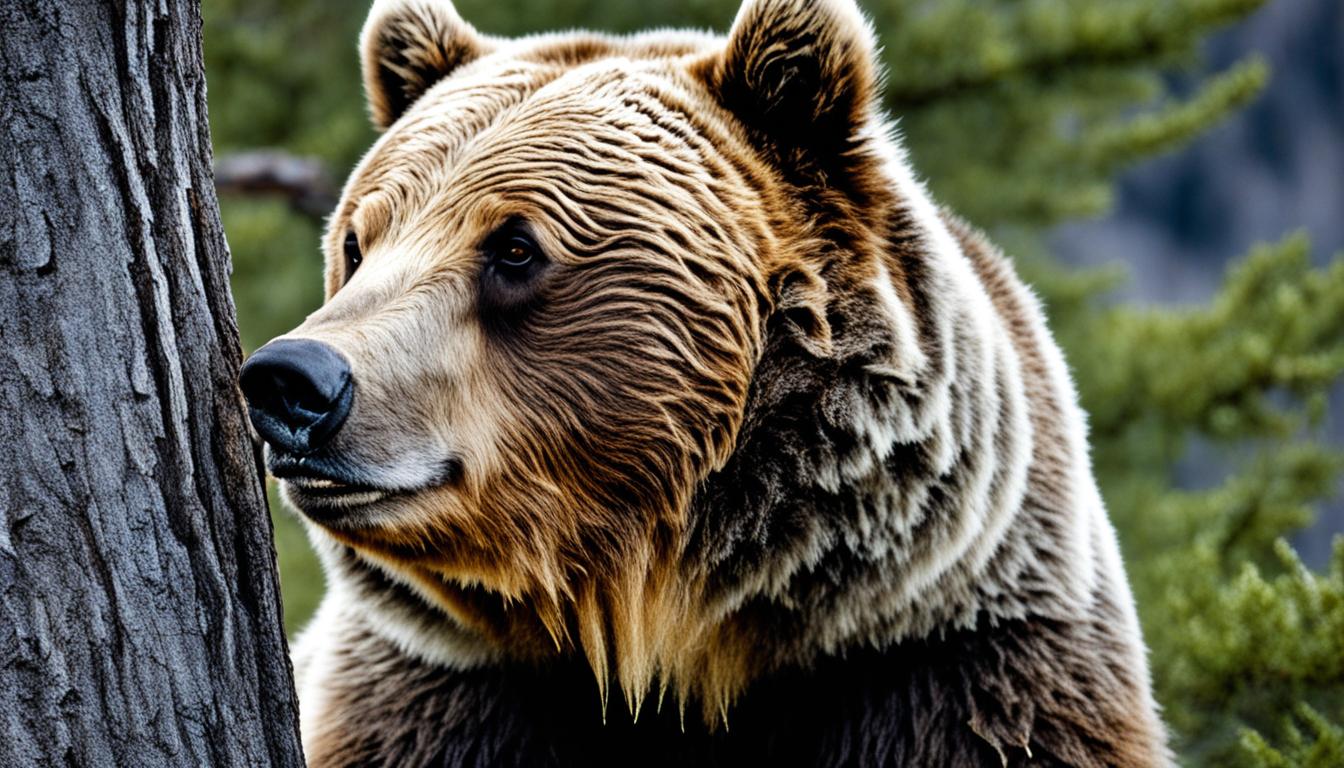In recent years, the chimpanzee population in Gombe National Park in Tanzania has faced significant challenges. Loss of suitable habitats, including deforestation for charcoal production and smallholder agriculture, has led to a decline in chimpanzee populations. This decline is not limited to Gombe National Park but extends to Tanzania’s overall chimpanzee population. Over 1,000 chimpanzees living outside protected areas are in imminent danger due to habitat conversion and human settlements.
The impacts of human-chimpanzee conflicts on chimpanzee populations are profound. To ensure the survival of these incredible creatures, it is crucial to understand these impacts and implement effective conflict resolution strategies. The Jane Goodall Institute is working with local communities near Gombe National Park to address these issues and mitigate human-chimpanzee conflicts. By doing so, we can protect chimpanzee populations and promote harmonious coexistence between humans and chimpanzees.
Factors contributing to chimpanzee-human conflicts
The loss of suitable habitat for chimpanzees is a major factor contributing to conflicts between humans and chimpanzees. Deforestation for charcoal production and smallholder agriculture have led to the destruction of chimpanzee habitats, forcing these primates to search for food and shelter in close proximity to human settlements. This increased proximity has resulted in heightened encounters and escalating aggression between the two species.
The growing popularity of oil palm cultivation in western Tanzania, particularly in the Kigoma region near Gombe National Park, has exacerbated the situation. As more land is converted for oil palm plantations, chimpanzee habitats are destroyed, leading to further conflicts and competition for resources. Additionally, smallholder agriculture poses a significant threat, as farmers often resort to aggressive measures to protect their crops from hungry chimpanzees.
It is essential to address these factors and understand their impact on human-chimpanzee conflicts in order to develop effective strategies for conflict resolution and the protection of chimpanzee populations. By addressing the loss of habitat, promoting sustainable land-use practices, and implementing conservation measures, we can work towards mitigating conflicts and ensuring the long-term survival of chimpanzees in their natural habitats.
| Factors contributing to chimpanzee-human conflicts | Description |
|---|---|
| Loss of habitat | The destruction of suitable habitats due to deforestation for charcoal production and smallholder agriculture forces chimpanzees to venture closer to human settlements. |
| Oil palm cultivation | The growing popularity of oil palm cultivation leads to the conversion of chimpanzee habitats and increased encounters between humans and chimpanzees. |
| Smallholder agriculture | As farmers protect their crops from chimpanzees, conflicts arise between the two species, resulting in aggression and human-chimpanzee conflicts. |
Effects of human-wildlife conflict on chimpanzee behavior and movements
Human-wildlife conflicts have a significant impact on chimpanzee behavior and movements. As their natural habitats are encroached upon by human activities, chimpanzees are forced to adapt and navigate new territories in search of food and shelter. Migration plays a crucial role in this process, as chimpanzees may travel within or outside protected areas in response to changing environmental conditions and food scarcity.
Migratory patterns expose chimpanzees to increased contact with humans, increasing the risk of conflicts. Encounters with humans often lead to aggression and violence, as both species compete for resources and territory. This chimp-human contact can result in injury or even death for chimpanzees, posing a serious threat to their populations.
Bushmeat hunting exacerbates these conflicts further. The demand for bushmeat, coupled with the presence of refugees in the region, puts additional pressure on chimpanzee populations. This illegal hunting not only directly reduces their numbers but also disrupts social structures and impacts overall chimpanzee behavior. The loss of key individuals and the fragmentation of groups disrupts the natural dynamics, making it even more challenging for this species to survive.
| Effects of Human-Wildlife Conflict on Chimpanzee Behavior and Movements | |
|---|---|
| Migration | Increased chimp-human contact |
| Risk of bushmeat hunting | |
| Food scarcity and competition |
The combination of migration, chimp-human contact, bushmeat hunting, and food scarcity puts chimpanzees at significant risk. Without effective interventions and conservation efforts, their populations will continue to decline. It is imperative that we implement strategies to mitigate human-wildlife conflicts and protect the remaining chimpanzee populations.
Strategies for mitigating human-chimpanzee conflicts
Addressing human-chimpanzee conflicts requires a comprehensive approach that involves community engagement, conflict prevention, conservation initiatives, and effective wildlife management. By actively involving local communities in the process, we can foster a sense of ownership and responsibility towards protecting both human and chimpanzee populations.
Community Engagement
One of the key strategies for mitigating human-chimpanzee conflicts is community engagement. By fostering positive relationships between local communities and conservation organizations, we can encourage collaboration and cooperation in finding sustainable solutions. This can be achieved through initiatives such as community education programs, which aim to raise awareness about the importance of coexistence and the role that chimpanzees play in maintaining ecological balance. By involving community members in decision-making processes and providing alternative livelihood opportunities, we can reduce the dependence on activities that contribute to conflicts, such as smallholder agriculture.
Conflict Prevention
To effectively prevent conflicts between humans and chimpanzees, it is crucial to address the underlying causes. This includes implementing land-use planning strategies that designate areas for conservation, creating buffer zones between human settlements and chimpanzee habitats, and establishing regulations to protect key resources and minimize human impacts. By promoting sustainable land and resource management practices, we can reduce the competition for resources and minimize instances of aggression and conflict.
Conservation Initiatives and Wildlife Management
In addition to community engagement and conflict prevention, conservation initiatives and effective wildlife management play a vital role in mitigating human-chimpanzee conflicts. This includes implementing measures to protect and restore chimpanzee habitats, establishing wildlife corridors to promote connectivity between fragmented populations, and implementing anti-poaching efforts to reduce the threat of bushmeat hunting. By investing in conservation research and monitoring, we can better understand the dynamics of human-chimpanzee conflicts and develop targeted interventions to mitigate them effectively.
Overall, by adopting a holistic and interdisciplinary approach that involves community engagement, conflict prevention, conservation initiatives, and wildlife management, we can work towards minimizing human-chimpanzee conflicts and ensuring the long-term survival of both species.
Conclusion
Human-chimpanzee conflicts pose a significant threat to chimpanzee populations and their survival. Factors such as the loss of suitable habitats, increased encounters with humans, and the threat of bushmeat hunting contribute to these conflicts.
However, through community engagement, conflict prevention strategies, and conservation initiatives, we can work towards mitigating these conflicts and promoting coexistence between humans and chimpanzees. By implementing effective conflict resolution efforts and raising awareness about the importance of primate conservation, we can ensure the long-term survival of chimpanzee populations.
It is crucial to understand the impacts of human-chimpanzee conflicts and develop coexistence strategies that prioritize the well-being of both species. By fostering a sense of responsibility towards wildlife and their habitats, we can create a sustainable future where humans and chimpanzees thrive together.
What are the potential solutions to reduce human-chimpanzee conflicts and protect chimpanzee populations?
In order to mitigate the humanchimpanzee conflicts impact populations, it is crucial to establish protected areas for chimpanzees, implement community-based conservation programs, and promote sustainable land use practices. Increasing education and awareness about the importance of chimpanzee conservation can also help reduce conflicts and protect their populations.
FAQ
How do human-chimpanzee conflicts impact chimpanzee populations?
Human-chimpanzee conflicts can significantly impact chimpanzee populations by causing loss of suitable habitats, migration, and increased risk of hunting and killings. It is crucial to understand and address these conflicts to ensure the survival of chimpanzees.
What are the factors contributing to chimpanzee-human conflicts?
Factors contributing to chimpanzee-human conflicts include primate aggression, loss of suitable habitats due to deforestation for charcoal production and smallholder agriculture, and the growing popularity of oil palm cultivation in western Tanzania.
What are the effects of human-wildlife conflict on chimpanzee behavior and movements?
Human-wildlife conflict can lead to chimpanzees venturing into human settlements or agricultural areas in search of food, increasing encounters with humans and the risk of conflicts. Migration and food scarcity also impact chimpanzee behavior and movements.
What strategies can be implemented to mitigate human-chimpanzee conflicts?
Mitigating human-chimpanzee conflicts requires community engagement, conflict prevention strategies, conservation initiatives, and effective wildlife management. Land-use plans, awareness campaigns, and sustainable practices can promote coexistence between humans and chimpanzees.
How important is primate conservation in addressing chimpanzee-human conflicts?
Primate conservation plays a vital role in mitigating chimpanzee-human conflicts and ensuring the long-term survival of chimpanzee populations. By raising awareness and implementing effective conflict resolution efforts, we can protect chimpanzees and promote coexistence.

